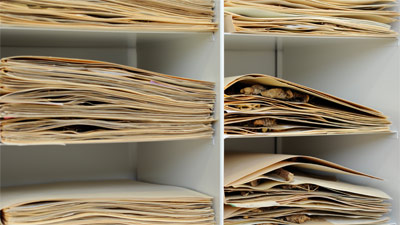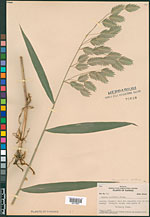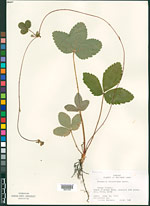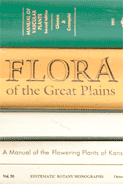
|
||
| SEARCH THE DATABASES | ||
|
||
GUIDELINES FOR USE |
||||
 |
> Handling Specimens |
|||
|
Students and researchers are encouraged to visit the Herbarium, and these guidelines are intended to facilitate its use and ensure its preservation. All users must understand and adhere to the policies described herein.
Any questions should be directed to members of the staff. In addition, all visitors are asked to sign the visitor's log at the entrance to the Herbarium. This information helps us document usage of the Herbarium, and provide better services to those who visit.
>>>> Research Policies
|
||||
Handling Specimens Herbarium specimens are fragile! This is especially true at KSU, Use common sense in handling the specimens:
|
|
|||
 |
||||
Locating a Specimen The families are arranged following a system of 400+ families, of which we use about 380 (arrangement of flowering plant families follows Cronquist, 1981). This arrangement is posted on several cases at the ends of the herbarium aisles. Within each family, the genera are arranged alphabetically (generic nomenclature generally follows that of Flora of the Great Plains). Within each genus, species are arranged alphabetically. Furthermore, Kansas specimens are separated and placed in folders with a green tag (filed at the beginning of each genus), and specimens of cultivated material are separated and placed in folders with a red tag (filed at the end of the genus). Researchers looking for type material should consult the Curator.
|
||||
Pest Management We operate under an “Integrated Pest Management Plan" that aims to minimize the use of pesticides. It is thus imperative that all workers adhere to the following policies:
All plant material entering the herbarium will be hard frozen, and this must be arranged by a staff member. The only non-frozen plant material permitted in the herbarium will be for identification by Mark Mayfield and must be delivered directly to him; if Dr. Mayfield is unavailable, such material will be deposited in the box outside of the main door. |
||||
Herbarium Library The Herbarium houses an extensive collection of floras, other books, journals and reprints for use in taxonomic research and plant identification. These materials are intended for in-house use (permission to borrow an item must be obtained from the Curator). |
|
|||
Plant Driers he Herbarium has two plant driers, with the primary one being located outside the main door. All presses placed in the drier should be labeled by name and date. The drier must be monitored while in use and unplugged when not in use. Most well-packed presses will dry within a maximum of five days, and should be removed by that time (by the person who placed the press in the drier).
|
||||
>>>> Research policies
|
||||



